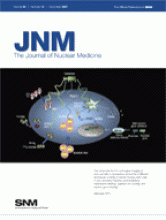This textbook, CT and Magnetic Resonance of the Thorax, was first published 21 years ago, and its third edition came out 7 years ago. There have been tremendous changes in the field of thoracic imaging during this time. This fourth edition attempts to meet the formidable challenge of keeping pace with the ever more rapid expansion of various technical innovations. These include picture archiving and communication systems and advances in imaging processing, such as computer-assisted diagnosis. This expansion in technology has required substantial modifications to the organization of the book.
Most important has been the inclusion of sections specifically highlighting cardiovascular studies, with sophisticated cardiac images made by the recent multidetector CT scanners. Similar considerations apply to the need for PET in the clinical management of chest disease, again reflecting the rapidly growing influence of new technology.
Despite these changes, the overall intent of the authors remained the same: to produce a single, accessible volume devoted primarily to clinical thoracic imaging, with 9 chapters. To meet this challenge, the authors have eliminated an introductory chapter, instead reviewing the technical aspects of CT, MRI, and PET as individually pertinent to specific chapters. In addition, the first 3 chapters have been rearranged to sequentially cover the heart, aorta, and pulmonary arteries as a coherent unit. As before, the remainder of the book maintains the anatomic subunits of the thorax, including chapters devoted to the mediastinum, airways, lungs, pleura, chest wall, and diaphragm. Each chapter discusses imaging techniques, normal anatomy, and various pathologic states, with details on CT and MRI findings. The authors deleted a previous chapter devoted to the pulmonary complications of AIDS and excluded functional imaging of the lungs to keep this edition to a single volume that provides in-depth analyses of current clinically relevant topics rather than superficial overviews.
There are 942 figures and 97 tables. The figures are superb in that they point out detailed anatomic and pathologic findings, and the tables provide good summaries of the classifications or characteristics of diseases and disease mechanisms. As mentioned in the preface to the third edition, it is authors' belief that accurate radiologic interpretation requires in-depth familiarity with the clinical context rather than simple pattern recognition.
This book is easy to read and useful to all involved in the clinical assessment of the entire gamut of thorax diseases, particularly thoracic radiologists and medical and surgical physicians. The book should be placed in medical libraries for students, trainees, and researchers who want to apply CT or MRI of the thorax.
Footnotes
-
COPYRIGHT © 2007 by the Society of Nuclear Medicine, Inc.







